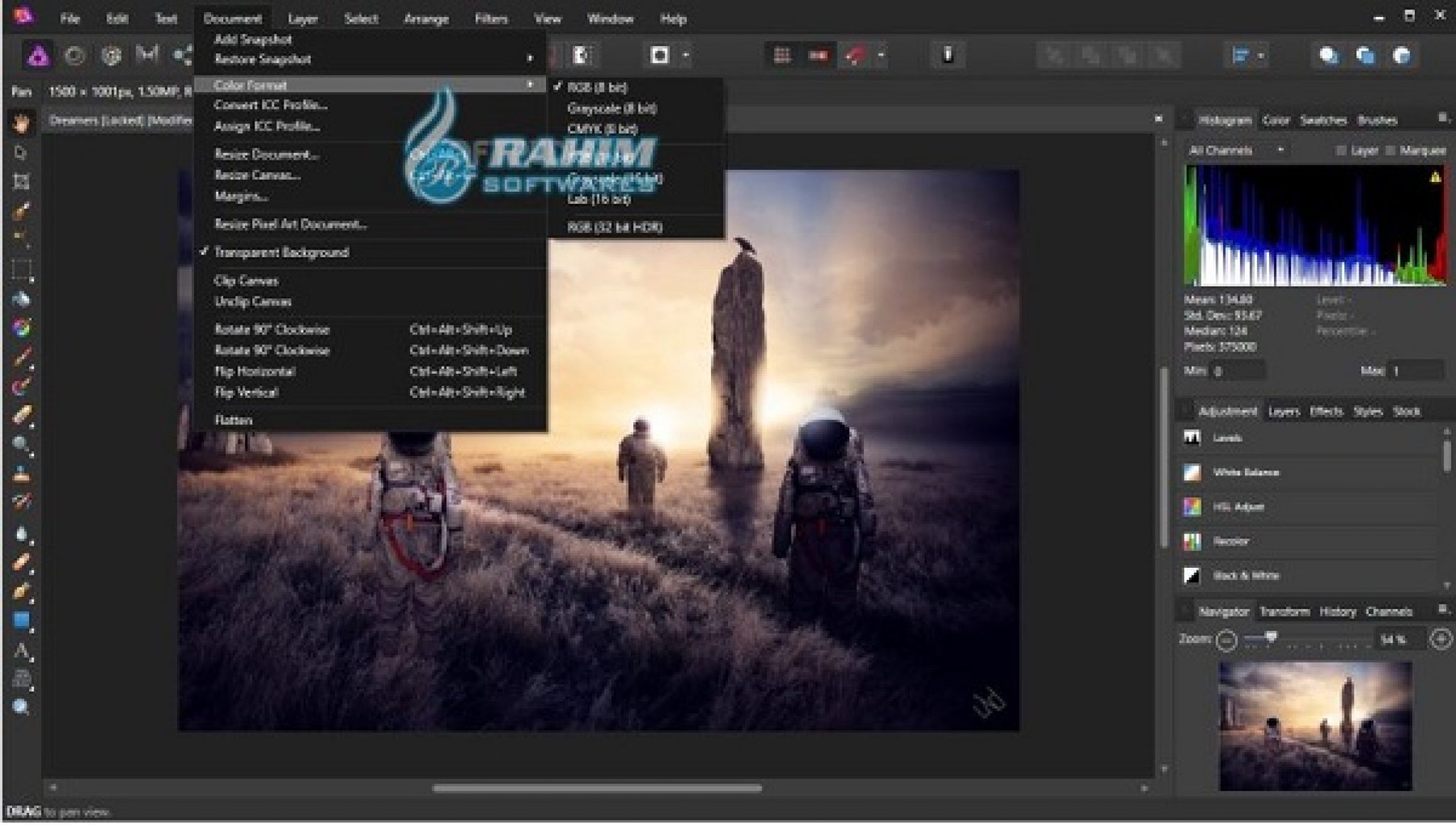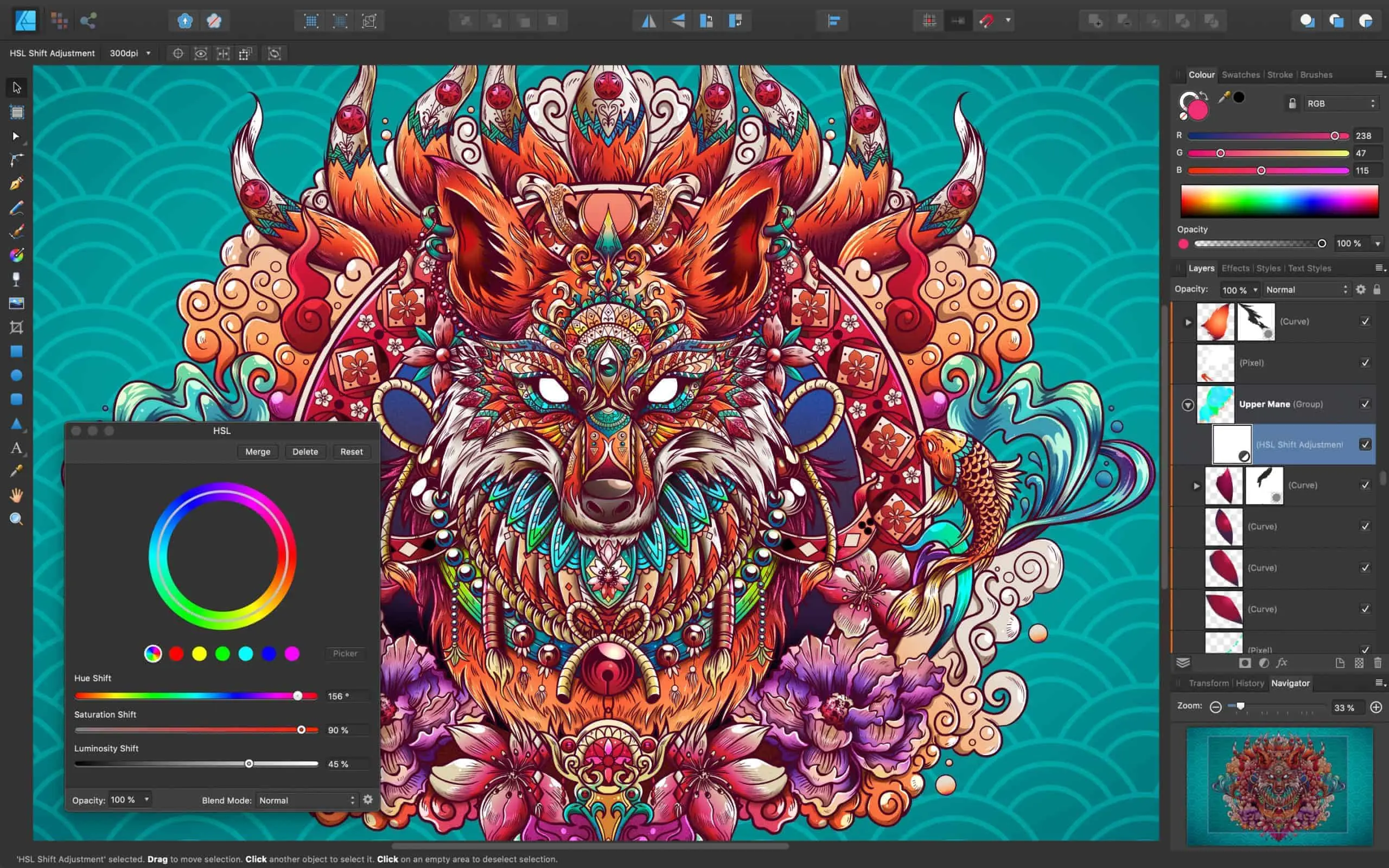

The ‘Adjustment’ tools work nicely, creating an adjustment layer above the image layer being worked on. These can be manipulated, moved about and even nestled within other layers. So it can take a bit of getting used to finding the ‘Adjustment’ tool you want, but this is a minor niggle. Tools can be switched on and off and their position on the screen can be changed to make it easier for the user to set up for their own convenience.īut we found that the ‘Adjustment’ tools do not allow you to re-arrange them, neither are they arranged alphabetically. We liked the way that the interface layout can be managed.
#SERIF AFFINITY PHOTO SOFTWARE#
The user interface is similar to most image-processing software and is easy to use, with a menu bar at the top, a tool bar down the left and lots of tabs to access different ‘Adjustment’ tools, including ‘Curves’, ‘Levels’ and so on.


For this review we didn’t need to use the other three options: ‘Liquify’, ‘Tone Mapping’ and ‘Export’. The other is the ‘Develop Persona’, which is opened automatically when RAW camera image files are opened.Īdjustments can be made from here, before opening within the ‘Photo Persona’ for further editing. We only needed to use two of these in our testing one is the ‘Photo Persona’, where you make all the edits and adjustments to your images. The installation files proved easy to download and they were installed flawlessly on the Windows and Apple computers we tried. New updates were prompted, downloaded, and installed without issue.įour icons located at the top left, just below the menu bar, are the gateways to what Serif calls Affinity’s ‘Personas’, each of which changes the software to a particular role.


 0 kommentar(er)
0 kommentar(er)
